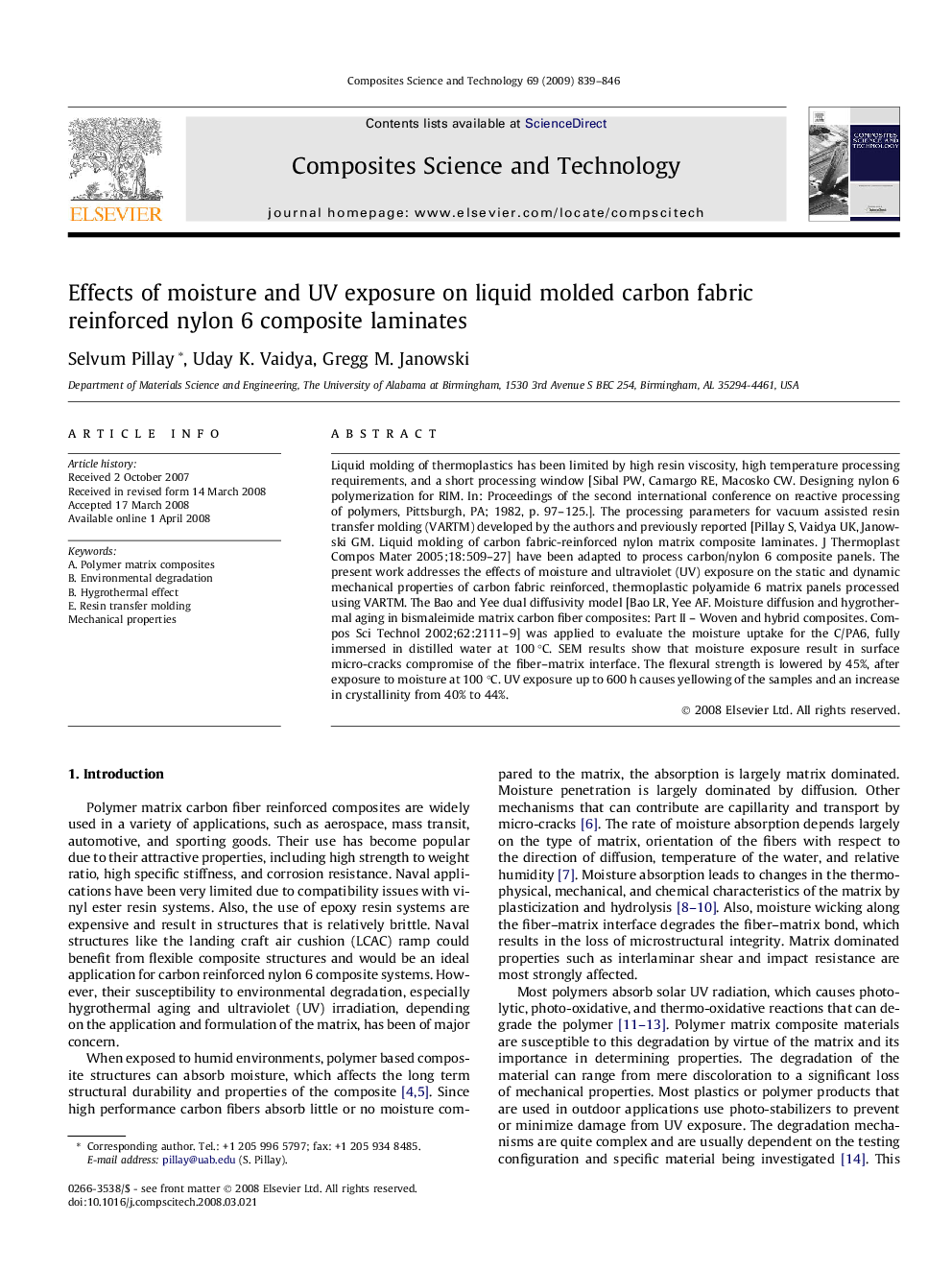| Article ID | Journal | Published Year | Pages | File Type |
|---|---|---|---|---|
| 821456 | Composites Science and Technology | 2009 | 8 Pages |
Liquid molding of thermoplastics has been limited by high resin viscosity, high temperature processing requirements, and a short processing window [Sibal PW, Camargo RE, Macosko CW. Designing nylon 6 polymerization for RIM. In: Proceedings of the second international conference on reactive processing of polymers, Pittsburgh, PA; 1982, p. 97–125.]. The processing parameters for vacuum assisted resin transfer molding (VARTM) developed by the authors and previously reported [Pillay S, Vaidya UK, Janowski GM. Liquid molding of carbon fabric-reinforced nylon matrix composite laminates. J Thermoplast Compos Mater 2005;18:509–27] have been adapted to process carbon/nylon 6 composite panels. The present work addresses the effects of moisture and ultraviolet (UV) exposure on the static and dynamic mechanical properties of carbon fabric reinforced, thermoplastic polyamide 6 matrix panels processed using VARTM. The Bao and Yee dual diffusivity model [Bao LR, Yee AF. Moisture diffusion and hygrothermal aging in bismaleimide matrix carbon fiber composites: Part II – Woven and hybrid composites. Compos Sci Technol 2002;62:2111–9] was applied to evaluate the moisture uptake for the C/PA6, fully immersed in distilled water at 100 °C. SEM results show that moisture exposure result in surface micro-cracks compromise of the fiber–matrix interface. The flexural strength is lowered by 45%, after exposure to moisture at 100 °C. UV exposure up to 600 h causes yellowing of the samples and an increase in crystallinity from 40% to 44%.
